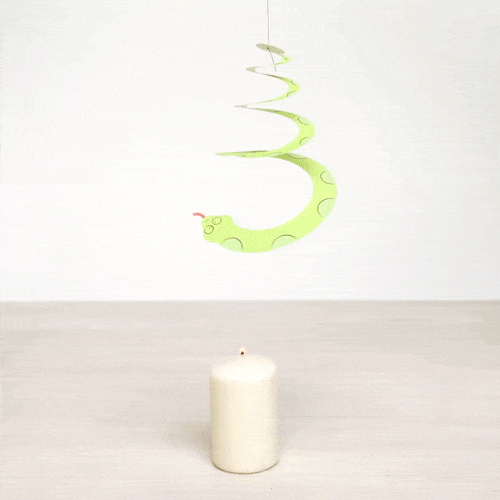Swinging Salt Pendulum

A pendulum is a hanging weight that swings back and forth, like the swinging arm on a grandfather clock or a swing on a playground. When you pull a swing - or any pendulum - up to one side, gravity tugs it back down. But since the swing is attached by a rope or chain, it doesn’t just drop to the ground. Instead, it swings back and forth, over and over. The pattern of the pendulum’s path shows amazing physics at work!
Make your own swinging pendulum and trace its path with lines of colored salt!
How we did it:
Materials List
- salt
- food coloring
- plastic bags
- plastic cup
- string
- scissors
- pencil
- table
- duct tape
-
Step 1
Drip a few drops of food coloring into a bag of salt. Then, press all of the air out of the bag, zip it up, and smush the salt and food coloring around until it’s all mixed.
-
Step 2
Repeat step 2 for as many colors of salt as you would like.
-
Step 3
Use a pair of scissors to make a hole in the center of the bottom of the cup. Then, make three more holes spaced evenly along the rim of the cup.
-
Step 4
Thread a short piece of string through each of the three holes along the rim of the cup. Then, tie a knot on one end of each of the strings.
-
Step 5
Tie the three strings together.
-
Step 6
Tie a long piece of string to the knot. Then, tie the other end to a pencil.
-
Step 7
Tape the pencil to the edge of a table so that the cup hangs off the edge.
-
Tip!
Make sure that the cup is hanging about 2 to 3 inches off the ground.
-
Step 8
Hold your finger over the hole in the bottom of the cup while you fill it with the first color of salt.
-
Step 9
Still holding your finger over the hole, raise the cup up towards one leg of the table.
-
Step 10
Let it go and watch your pendulum swing, leaving a trail of colored salt in its wake! Repeat with each color of salt!
-
Tip!
The salt might stop flowing near the bottom of the cup. Make sure that you fill the cup at least two-thirds full with salt when you start. Fill it with a new color of salt when the salt stops flowing out of the hole!
-
Learn More!
What shapes do you see in the path of your pendulum? You may see straight lines when you simply let it go, or spiralling ellipses or circles when you give it a push to the side.
When you let the pendulum go, gravity pulls it down and gets it moving, which also gives it momentum (that's what keeps a moving thing moving). The pendulum's momentum carries it past the bottom of its swing and up as high as it can on the other side. Then gravity pulls it back down, and the whole thing starts again!
What do you notice about the pendulum's motion? As long as you don't pull it back TOO far, a pendulum will always swing back and forth at the same speed. Its rate only changes if you make the string longer or shorter. This makes pendulums great for time-keeping, and it's why they're used in clocks, metronomes, and other devices.
You probably also noticed that the pendulum eventually loses some of its swing, so the path spirals inward till the pendulum stops. This is because of air resistance, which pushes back against the swinging cup, and friction, which happens as the string rubs on the pencil. Air resistance and friction are the same things that make it so you can't swing on a swing without continuing to pump your legs. If you could somehow get rid of air resistance and friction, though, your pendulum would keep swinging and tracing the same path forever!
-
Learn More!
To make more intricate pendulum paths, tape a second pencil to the table at least a foot away from the first pencil, then tie a long string between them. Tie your pendulum to the middle of that string, so the strings make a Y shape. Let your pendulum go, and see what happens to the patterns now!
















